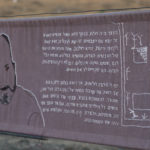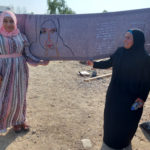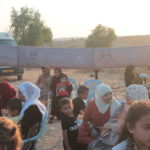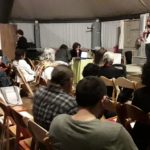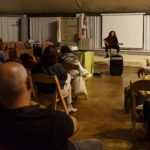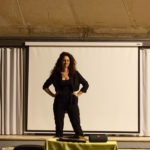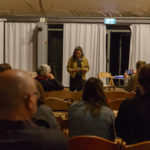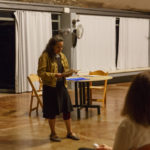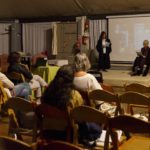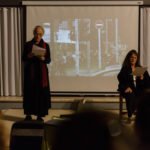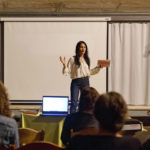Training Course for Change Agents in the Performing Arts 2021
Between September 2020 and November 2021, the School for Peace conducted a change agents course – the first of its kind – for professionals in the performing arts.
The School for Peace trains people in diverse fields to become agents of change who will combat racism, promote equality and human rights, and initiate shared projects involving Jews and Palestinians. Our change agent courses have trained lawyers and jurists, planners and architects, mental health professionals, politicians, and journalists, among other fields represented.
The state of the relations between Arabs and Jews, Palestinians and Israelis, demands that we change each side’s deepest perceptions about the other. One way to reshape the current reality is through the performing arts, including theater, film, and television. Professionals in these fields create art that evokes a different discourse, one that challenges and expands freedom of expression and foregrounds subjects that may not have found exposure in any other way.
The course had 18 participants, Palestinians and Jews, women and men. It encompassed a dialogue between identities, with a theoretical level covering the historical dimension and the realm of art in the context of conflict, and a practical level where participants produced individual or group works of art.
Below you can see more about some of the works created by course participants, plus photos of the concluding event.
Course coordinators and facilitators: Shahira Shalabi, Einat Weizman and Dr. Nava Sonnenschein.
Einat Weizman, prominent political artist and one of the course facilitators, answers questions about what the course was like from her perspective:
Einat, please talk about the process the group underwent: how they began, what they went through, and where they got to at the end.
What we underwent was very challenging, first of all on the technical level, with lockdowns, social distancing, cancellations and so forth, when actually we – Nava Sonnenschein, Shahira Shalabi and I – were trying to create continuity and closeness between the participants. Apart from this technical challenge, we went from a collection of individuals to a group going through something together. I found it very interesting to observe this from the sidelines and also to take part in it. Some moments here and there during the early sessions were not easy. At times I worried that the group might fall apart or that some participants might quit, but happily people persevered, which proved worthwhile. The glue that held it together was both social – with weekend meetings and having fun together as inseparable components of the long conversations on politics and of doing art together.
- How did the process the group underwent influence the social and political reality? What changes did the group make in the wider reality?
Every little change matters. The fact that some participants moved from doing art of some kind to doing political art is a big success, in my view. After all, the goal of the course was to create a different generation of artists – to forge them into activists, motivated to push change and provoke a dialogue. And most important – to equip them to be critical and bold. In my view, artists like this are the future and they embody our hopes. Some of the participants were that way when they began the course and others were pushed in that direction or were newly motivated.
Some of those in the course were inspired by the story of the unrecognized village of Al Araqib, the village demolished 194 times and always rebuilt. I believe they will continue going there; each one who visits there and contributes their time and the power of their artwork to that village is promoting major change, first of all in boosting the spirits of the village’s children, but also in terms of consciousness-raising.
- What do you see on the horizon in this specific group’s future, in terms of promoting change in their own fields? –as a group or as individuals.
I think that the playing field for the arts must change, and I believe that artists have the power to generate such change. Remember that the arena for our struggle is awareness, and narrative. Artists have the ability to go straight to the hearts and minds of those who see their work. Art circumvents what is taken for granted and poses questions that won’t be encountered in the media or in politics. Artists can open a small window for people, into places that no one else has entered or wanted to enter.
- What was this course, for you?
For me, this course was a conversation: a long, ongoing conversation over nearly a year. The dialogue ranged over ethical and political and personal questions and involved lots of argument, tears, great intimacy, strangeness, curiosity, anger, and even despair. And love. Art is also like that.
By means of this long conversation, I found greater clarity – as I hope other participants also did – on what it is important for us to talk about. And by translating our conversation into works of art, we can communicate with others to share our ideas and our questions about the reality we inhabit.
- Tell about something that was especially interesting for you in the process.
I think that the strongest moments involved conflict, disagreement, the failure of language. That’s where the connections happened. When we all agreed about politics and morality, it wasn’t interesting. Coming to know each other, and changing, are products of friction. So each time someone raised their voice, each time I was afraid that it was all about to fall apart, each time someone felt insulted and burst out crying – that’s where the drama came from and that’s where truth emerged, not just in personal terms but also politically. The change came from the communication failures and clarifications.
Among the artworks created by participants during the course:
Manifesto of a Freedom Fighter | short film
Concept: Gili Meisler
Execution: Gili Meisler, Basel Tannous
(Both were course participants)
Watch the film:
“Life in the shadow of death” | Documentary film
A work by Bilal Yousef
This documentary looks at crime in Arab society in Israel and the negligent institutional response. The film follows the Forum of Bereaved Mothers, all of whom have lost a family member to murder by organized crime figures who roam freely through communities. The film will be shown soon on Kan11 Television. Bilal was interviewed for Ynet online:
“My wife is pregnant with our fourth child – and I am afraid for our children’s future,” Yousef confessed to Ynet. “When I was a boy, I would roam around my village, Daburiyya, just as I pleased. Today, my son doesn’t know his own neighborhood. Because of the fear – I don’t take him out of the house.”
Apart from working on the film, soon to be screened on Kan11, Yousef proposed holding weekly protests across the street from the home of Minister of Internal Security Omer Bar Lev. “Shooting happen almost weekly. Hardly a week goes by without a shooting,” he says. The lack of personal security and the fear are what brought him to flood Twitter about the protests. “I did it out of frustration after I heard about a double murder. I invited just a few friends to protest with me – I didn’t expect that so many people would take part.”
Read the full article here (Hebrew)
Watch the trailer for the film:
The Tapestry of Al-Araqib 2021
A work by Adam Uriel Ruff
Community art by the SimanChe – Alama arts collective
With the women and men of Al Araqeeb, directed by and with the participation of Adam Uriel Rouf, Meirav Weiss, and Leora Ginat
The Israeli-Palestinian conflict is mainly one of collective images. In that context, art is not a luxury item but rather a crucial basis for real change. The idea for the project “The Tapestry of Al Araqib” is to connect similar forms from different cultures (and different times) and, with that homage, to change their meanings: The form of the tapestry in this film is a response to the famous Bayeux Tapestry of 1077 CE. In that work, French-speaking Normans commemorate the successful conquest of England in the Battle of Hastings, fought 11 years earlier, in 1066. The tapestry is considered iconic in the history of Western art, but the story of the losing side does not appear there. The Al Araqib tapestry employs a medium with deep roots in Islamic tradition generally, and in Bedouin tradition in particular, as well as in Christian and Jewish tradition. Through their tapestry, the women and men of the village tell their story, as a brave community that refuses to be erased from the earth, from the map, and from history itself.
The Aesthetics of Relations
Led by: Valeria Geselev
Valeria, a curator from Haifa and a course participant, writes about the process:
“The encounter itself – between artists trying to understand their place in our society, in light of the political challenges surrounding us – was an artistic action. As a curator working on creating shared spaces and nurturing the political imagination, my participation in the course was for me an example of what art is about – “the aesthetics of relations.” At the conclusion of the course I presented similar projects I had curated in order to place the crux of the ongoing encounter between us into the context of practices in contemporary social art.”
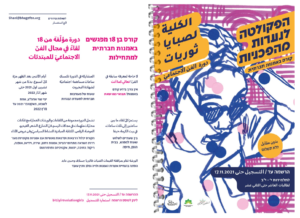
Swimming Lesson | mockumentary short film
A work by Vardit Goldner
The film seeks to address the phenomenon of non-entry for Bedouin citizens into swimming pools in the Negev and southern Israel. This discriminatory policy is linked to the high frequency of drowning cases among Bedouin residents due to their lack of access to swimming lessons. Today there are more than 200,000 Bedouin residents of the Negev, yet in all the towns where Bedouin live, there is only one swimming pool, opened in 2017 (in Rahat). Discrimination prevents most Bedouin from gaining entry to swimming pools in Jewish towns. This film is a mockumentary in which Jewish women teachers are teaching a Bedouin woman to swim but, due to the lack of available pools, the lesson is conducted on dry ground, with the aim of making people think about how Bedouin residents are denied access to swimming lessons in the water.
The project was supported by the Mifal HaPais Council for the Culture and Arts.
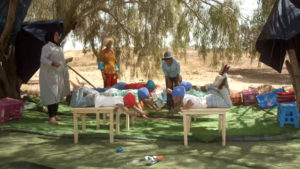
I have a dream | A personal-political text on a journey of disillusionment
A work by Adi Mor
“Once upon a time an older American man from Texas asked me, after a political discussion, ‘So your living situation is really like segregation?’ For me this was a gut punch in terms of how much blindness there is among people in positions of power. And anyway, none of my pioneering dreams or my Robin Hood dreams could have happened if we had been living together.”
From the pioneer’s dream of riding bareback, to dreaming of Robin Hood and onward to Ahed Tamimi, Adi Mor describes candidly, seriously and with touches of humor the personal and political dimensions of her disillusionment. To read the full text…
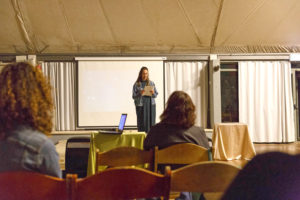
Photos from the concluding event of the course, on November 16, 2021:
- עינת ויצמן באירוע המסכם של קורס סוכני/ות שינוי ליוצרי/ות אמנויות הבמה, המסך והצילום, שנערך בנובמבר 2021


